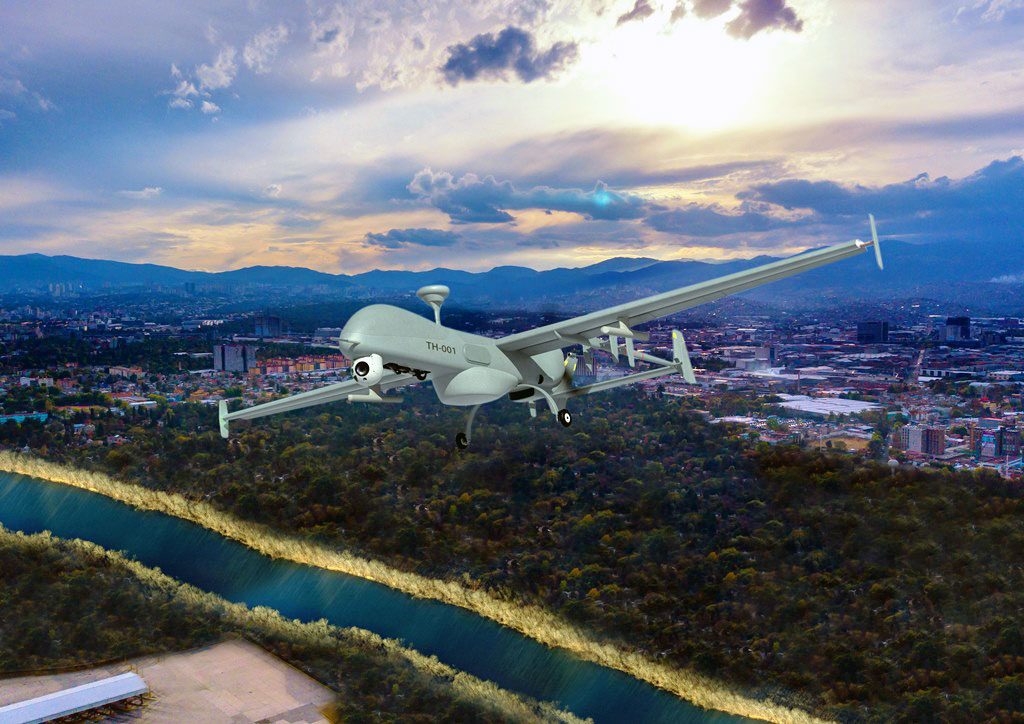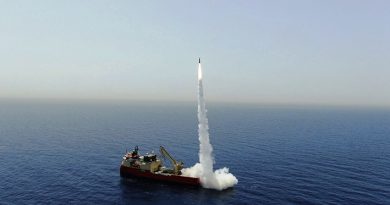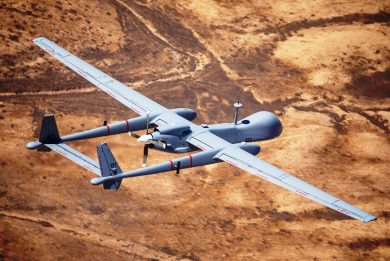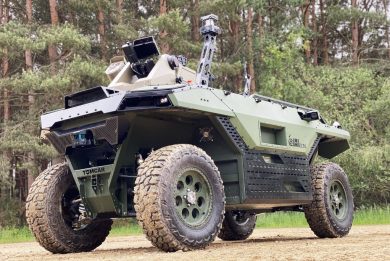
PAS 19: IAI unveils its new T-Heron
4 June 2019
By Paolo Valpolini
A third brother is being added to the Heron family of unmanned aircraft and IAI, the Israeli aviation company, will exploit the incoming Paris Air Show to introduce its T-Heron to the world, although numerous potential customers are already considering the new UAS according to Avi Blesser, VP Marketing at Military Aircraft Group. Although not physically present in Paris, the T-Heron, where T stands for Tactical, will therefore be one of the stars of the Israeli pavilion.
IAI decided that a UAS capable to be deployed by tactical formations on the field, providing them integral ISR capabilities, was needed; “our rationale was to scale down to 70% our Heron, using the same building blocks,” Blesser told EDR On-Line during a media phone briefing which anticipated those that will be held in Paris. This allows IAI to de-risk the development: “most of the building blocks have already been tested in flight, while we will fly the complete aircraft in December,” Blesser said, underlining that the flight test phase will be pretty short as all components are derivatives of the Heron.
The T-Heron has a MTOW of 600 kg, 180 kg of which are payload, its wingspan being 10.6 meters while its overall length is less than 8 meters. It is powered by a 4-stroke 4-cylinder Rotax 912 ISC providing 100 hp and driving a pusher propeller, the new member of the family having the typical twin tail boom architecture of the Heron family, as well as the retractable front gear avoiding to disturb the radar view. Maximum flight altitude is 24,000 ft, maximum operating altitude being 21,000 ft, while maximum speed is 120 knots. Cruise speed at 15,000 ft is 80 knots, wind limitation being 50 knots, the aircraft being able to operate between –40°C and +50°C and in a 50 mm/hour rain condition.
Two trucks carry the whole system, a hastily prepared “very short” ground strip being sufficient for take-off and landing, maximum admitted cross wind in that phase being 20 knots. This, together with the small footprint of the ground segment, allow the T-Heron to operate close to the operational area, providing not only integral ISR capabilities to the ground formation, presumably a Brigade-size unit, but also maximising the aircraft time on target. IAI declares an endurance of 24 hours, two communication packages being available; the line-of-sight one ensures a maximum range of 250 km, a SATCOM communication suite being also offered, the company proposing a 1,500 km range in order to maintain sufficient time on target. This allows operating the aircraft from remote locations, IAI being ready to provide a Ground Control Centre capable to fly multiple aircraft, if required. When used by tactical formations the Ground Control Station can be easily installed into a vehicle, armoured or unarmoured. Being part of the Heron family, the new T-Heron is capable to exchange data with the other members, as it is fully compatible with their ground control stations.
Coming to mission payloads, the T-Heron can carry simultaneously four different sensors, IAI proposing a full COMINT suite in HF, VHF and UHF bands, all with direction finding capabilities, an ELINT suite, a radar (different options being available), and an electro-optic/infrared suite with laser designation capability, which performances allow to carry out stand-off missions. Four hard points are available under the wings to carry pods, and data provided by all sensors are fed simultaneously in real time to the ground station. “We designed it with a large bay that helps integrating different payloads,” Avi Blesser said, while asked about a possible weaponisation of the T-Heron he underlined that IAI is proposing it with sensor payloads only.
The T-Heron was designed according to NATO STANAG 4671 UAV (System Airworthiness Requirements), STANAG 4545 (Secondary Imagery Format) and STANAG 4586 (Standard Interface of the Unmanned Control System Unmanned Aerial Vehicle Interoperability). It is fitted with an IFF (Identification Friend or Foe) and a TCAS (Traffic Collision Avoidance System), the latter allowing it to potentially fly in civilian airspace.
“The T-Heron already attracted the interest of a number of potential customers, some of them already operating the Heron, some of them not,” concludes Avi Blesser; “as of today we are tailoring customers’ requests, and we expect to launch production soon after the first flight.”
Pictorial courtesy IAI



